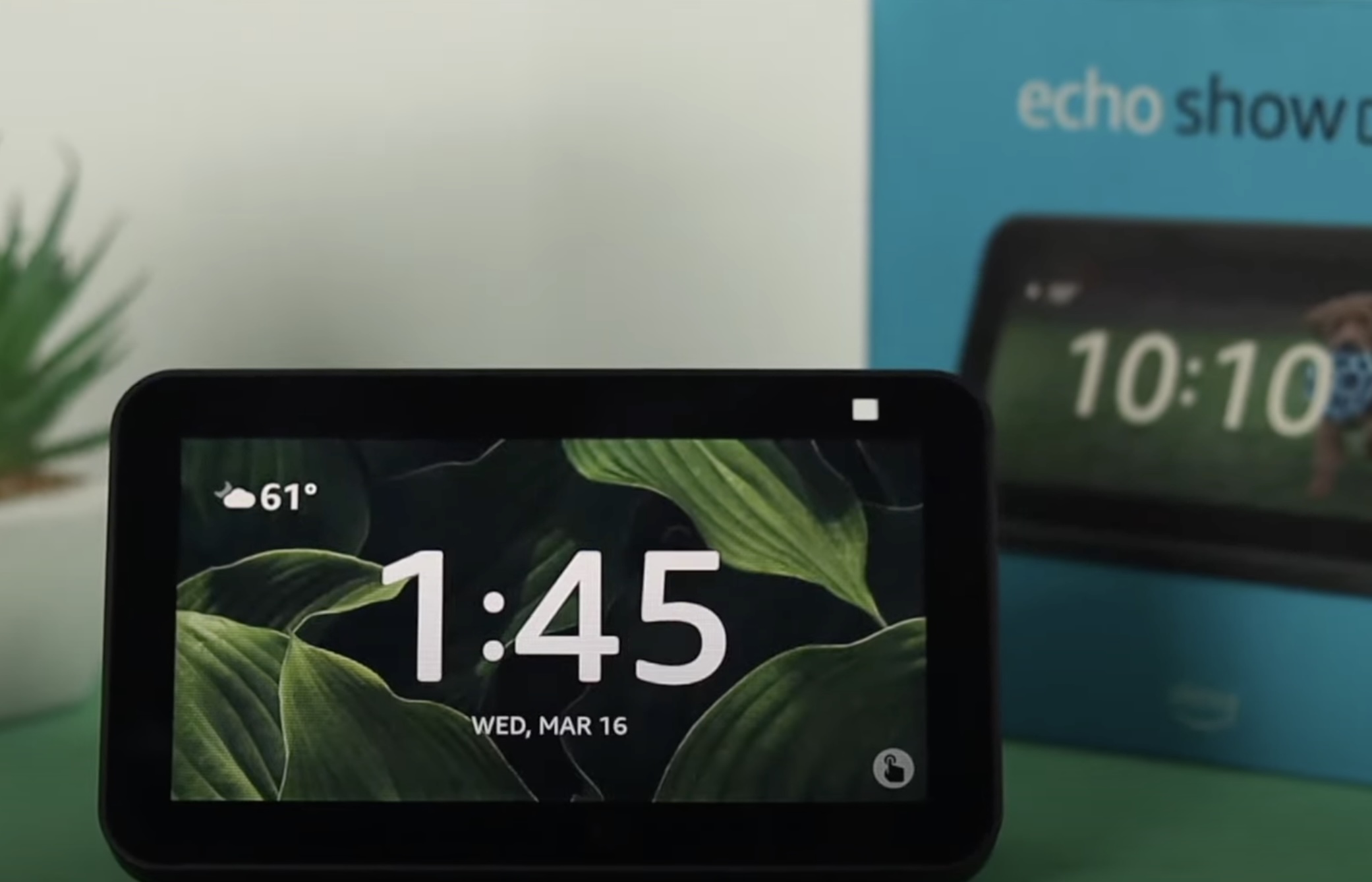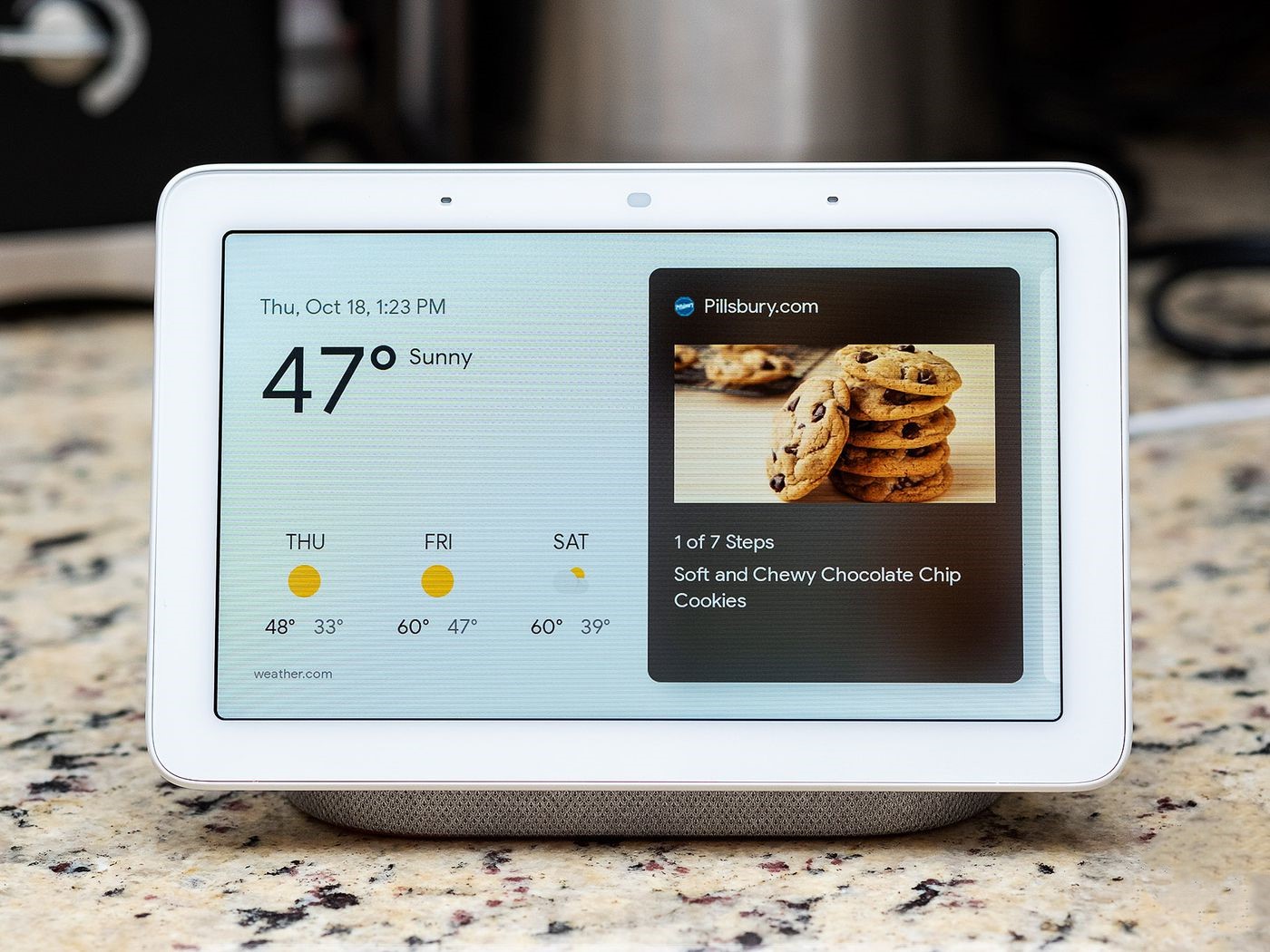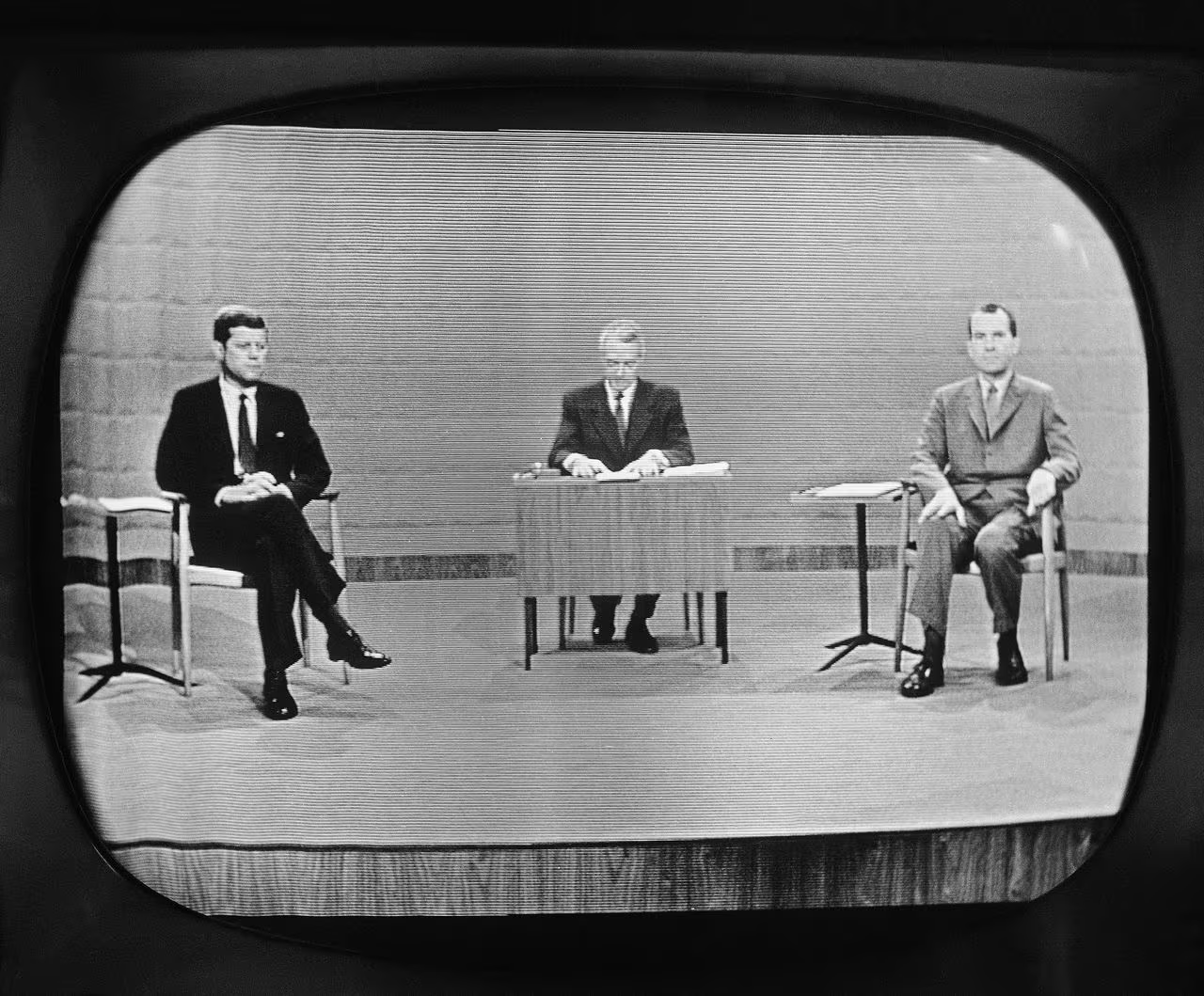Home>Technology>Home Entertainment Systems>How Did The Television Change Over Time?


Home Entertainment Systems
How Did The Television Change Over Time?
Modified: August 20, 2024
Discover the evolution of home entertainment systems and how the television has transformed over time. Explore the advancements that have shaped the way we experience TV today.
(Many of the links in this article redirect to a specific reviewed product. Your purchase of these products through affiliate links helps to generate commission for Storables.com, at no extra cost. Learn more)
Introduction
Over the years, the television has undergone tremendous changes, revolutionizing the way we consume entertainment in our homes. What started as a humble device with limited functionality has evolved into a sophisticated home entertainment system that offers high-definition visuals, internet connectivity, and access to a plethora of streaming services.
In this article, we will take a journey through time and explore the various stages of television evolution. From the early days of black and white television to the introduction of color TV and the advancements in design, we will delve into the innovations that shaped the modern home entertainment systems we enjoy today.
So, grab your remote control and get ready to explore how the television has transformed over the decades, giving us an immersive viewing experience like never before.
Key Takeaways:
- The Evolution of Television: From Mechanical Beginnings to Smart Multimedia Hubs
Television has evolved from mechanical systems to sleek smart TVs, offering vibrant visuals, on-demand content, and seamless internet connectivity, revolutionizing home entertainment. - Streaming Services: Redefining How We Consume Entertainment
Streaming services have transformed viewing habits, offering personalized content, original productions, and on-demand access across devices, reshaping the entertainment industry.
Early Television Technology
The roots of television can be traced back to the late 19th century, when inventors like Paul Nipkow and John Logie Baird made significant strides in developing the technology. The early television systems used mechanical methods to capture and display images, employing rotating disks and mirrors to capture and transmit the images.
These early television systems were far from perfect, with low resolution and limited picture quality. However, they laid the foundation for the future advancements in television technology.
One of the key breakthroughs in early television technology was the development of the electronic television system by Philo Farnsworth in the 1920s. Farnsworth’s system used electronic scanning to capture and display images, eliminating the need for mechanical components and improving the overall quality of the picture.
By the 1930s, television was starting to gain popularity, but it was still a relatively niche and expensive technology. The outbreak of World War II put a halt to further television development as resources were redirected towards the war effort.
However, after the war, the television industry experienced rapid growth, with advancements in technology and manufacturing making televisions more accessible to the general public.
The introduction of the cathode ray tube (CRT) in the 1940s revolutionized television display technology. These bulky tubes used electron beams to generate images on a phosphor-coated screen, allowing for brighter and sharper visuals.
Early televisions had small screens, usually no larger than 12 inches, and were housed in wooden cabinets. They had limited channel options and relied on antennas to pick up broadcast signals.
Despite their limitations, early televisions became a popular form of entertainment, bringing live news broadcasts, sports events, and popular shows into people’s living rooms.
As television technology continued to evolve, the era of black and white television gave way to the introduction of color television, marking a significant milestone in the history of home entertainment.
Black and White Era
The black and white era of television spanned several decades, from the 1940s to the 1960s, and marked the golden age of television programming. During this period, families gathered around their television sets to watch beloved shows like “I Love Lucy,” “The Twilight Zone,” and “The Ed Sullivan Show,” which became cultural phenomena.
Black and white televisions featured CRT displays that could produce shades of gray, providing a monochromatic viewing experience. These televisions became more affordable and widespread, with larger screen sizes now available, ranging from 15 to 25 inches. Antennas were still used to pick up broadcast signals, offering a limited selection of channels.
The programming during this era focused on live performances, variety shows, game shows, and classic sitcoms. The limited technology meant that special effects and visual enhancements were minimal, but it didn’t hinder the popularity of the medium.
Television sets were often housed in wooden cabinets, serving as a centerpiece of the living room. The consoles featured intricate details and designs, reflecting the importance of television as a new form of entertainment.
During the black and white era, television became a powerful tool for information dissemination. Families turned to their televisions for news updates and the coverage of important events, such as the moon landing and political speeches. Television brought the world into people’s homes, connecting them to global events in real-time.
With the popularity of television on the rise, advertisers recognized its potential as a marketing platform, leading to the emergence of commercial advertisements. Companies leveraged the power of television to promote their products and reach a wider audience, contributing to the growth of the consumer culture.
The black and white era of television laid the foundation for the future of the medium, setting the stage for the next major leap in television technology – the introduction of color television.
Introduction of Color Television
The introduction of color television in the 1960s brought a whole new level of visual immersion and realism to the viewing experience. It was a significant advancement that revolutionized the way we perceived and enjoyed television.
Color television utilized a more sophisticated technology compared to its black and white predecessor. Instead of a single electron beam, color televisions used three electron beams, one for each primary color – red, green, and blue. These beams combined to create a wide spectrum of colors, resulting in vibrant and lifelike images on the screen.
One of the first color television systems to gain widespread popularity was the NTSC (National Television System Committee) system, adopted in the United States. This system standardized the transmission and display of color signals, ensuring compatibility between different television sets.
The introduction of color television sparked a wave of excitement and enthusiasm among viewers. It opened up a new world of possibilities for content creators and allowed them to create visually stunning productions. Television shows, movies, and sports broadcasts came alive with vibrant hues, enhancing the overall viewing experience.
With color television, the television industry witnessed a surge in sales as consumers eagerly upgraded their black and white sets to experience the new visual technology. Television manufacturers began producing a wider range of models, offering various screen sizes and features to cater to different consumer preferences.
As the popularity of color television grew, broadcasting networks started producing content specifically designed for color displays. Shows were produced with careful consideration for color palettes and aesthetics, taking advantage of the newfound visual capabilities. Color became an integral part of storytelling, creating a more immersive and engaging narrative.
The introduction of color television not only enhanced the viewing experience but also had a profound impact on advertising. Companies seized the opportunity to create vivid and captivating commercials, leveraging the ability to showcase their products in full color. The combination of captivating visuals and persuasive messaging through television advertisements became a powerful marketing tool.
With color television, households across the globe experienced a new level of entertainment. The vibrant and realistic visuals provided a more engaging and immersive viewing experience, solidifying television as a central fixture in homes and shaping the future of home entertainment systems.
As technology continued to advance, further innovations in television design were on the horizon, leading to the development of flat-screen and high-definition televisions.
Advancements in Television Design
Advancements in television design have played a crucial role in shaping the modern home entertainment systems we know today. From the bulky CRT sets of the past to the sleek and slim screens we have now, the evolution of television design has revolutionized the way we experience audiovisual content.
One of the major milestones in television design was the transition from cathode ray tube (CRT) displays to flat-screen technology. Flat-screen televisions, such as plasma, LCD (liquid crystal display), and later, LED (light-emitting diode), revolutionized the industry by offering thinner and more lightweight designs.
By eliminating the need for bulky CRTs, flat-screen televisions saved space while providing better image quality and wider viewing angles. These advancements made it possible to mount televisions on walls, enhancing the aesthetic appeal of home theater setups.
Another significant advancement in television design was the introduction of high-definition (HD) technology. HD televisions deliver superior picture quality, with increased resolution, sharper details, and more vibrant colors. It offers a more immersive and lifelike viewing experience, allowing viewers to enjoy their favorite movies, shows, and sports events with exceptional clarity.
Alongside HD, the introduction of widescreen aspect ratios, such as 16:9, enhanced the cinematic experience by providing a wider field of view. This meant that viewers could enjoy movies in their original aspect ratios without black bars at the top and bottom of the screen.
The advancements in television design not only focused on visual improvements but also on audio enhancements. With the advent of surround sound technology, televisions offered immersive sound experiences that complemented the high-definition visuals. This allowed viewers to feel fully immersed in the audiovisual content, creating a more engaging and cinematic experience.
Television manufacturers also prioritized energy efficiency and eco-friendly design. Energy Star ratings and LED backlighting technologies were introduced to reduce power consumption and lower the carbon footprint of televisions.
In recent years, television design has continued to evolve, with the advent of ultra-high-definition (UHD) or 4K resolution displays. UHD televisions offer even higher levels of detail, sharper images, and more accurate color reproduction, further enhancing the viewing experience.
The design of modern televisions has become sleeker and more minimalist, with thinner bezels and clean lines. Many models have embraced smart features and internet connectivity, transforming televisions into multimedia hubs that provide access to streaming services, web browsing, and a multitude of apps.
Advancements in television design have truly elevated the home entertainment experience, making it more immersive, visually stunning, and convenient. As technology continues to progress, we can expect further innovations that will redefine the way we enjoy content in our homes.
Tip: The television has evolved from bulky, black-and-white sets to slim, high-definition screens. It has also transitioned from analog to digital technology, offering better picture quality and more features.
Read more: How Has Construction Changed Over Time
Flat-screen and High-definition Televisions
Flat-screen and high-definition (HD) televisions have revolutionized the way we enjoy audiovisual content, offering improved picture quality and sleeker designs compared to their predecessors.
The transition from bulky cathode ray tube (CRT) displays to flat-screen technology marked a significant advancement in television design. Flat-screen televisions, including plasma, LCD (liquid crystal display), and LED (light-emitting diode) screens, introduced slimmer profiles and lighter weights, making them more space-efficient and aesthetically pleasing.
Flat-screen televisions also brought about improvements in image quality. They offered brighter displays and wider viewing angles, ensuring that viewers could enjoy sharp images from various positions in the room. The elimination of the curved screens found in CRT televisions also reduced image distortion, resulting in a more immersive viewing experience.
One of the key advancements alongside flat-screen technology was the introduction of high-definition (HD) resolution. HD televisions provide superior picture quality, with increased resolution, sharper details, and more vibrant colors. The standard HD resolution is 1920×1080 pixels, commonly referred to as 1080p. This heightened level of detail allows viewers to enjoy movies, TV shows, and sports events with exceptional clarity and realism.
With the advent of HD televisions, content creators and broadcasters started producing and distributing programming in high definition. This opened up a new realm of visual experiences for viewers, as they could now witness every intricate detail and subtle nuance with stunning clarity.
In addition to HD, the introduction of widescreen aspect ratios also enhanced the cinematic experience. The most common widescreen aspect ratio is 16:9, which mimics the dimensions of movie theater screens. This means that viewers can enjoy films without the black bars at the top and bottom of the screen, providing a more immersive experience and ensuring that the intended visual composition is preserved.
As technology continued to progress, flat-screen televisions evolved further with the introduction of ultra-high-definition (UHD) or 4K resolution displays. UHD televisions offer even higher levels of detail, with a resolution of 3840×2160 pixels. This increased pixel density allows for incredibly sharp and lifelike visuals, bringing the viewing experience to a whole new level.
The combination of flat-screen technology and high-definition resolution has transformed how we consume entertainment in our homes. We can now enjoy movies, TV shows, and sports events with remarkable image quality, vibrant colors, and a level of detail that captures every moment with precision.
In addition to the advancements in picture quality, modern flat-screen televisions also boast improved sound systems. Many models incorporate built-in speakers or support for external soundbars and surround sound systems, delivering immersive audio that complements the visuals for a truly cinematic experience.
The evolution of flat-screen and high-definition televisions has not only changed the way we view content, but it has also influenced the overall design and aesthetics of our homes. With their slim profiles and sleek designs, these televisions have become focal points in living rooms, blending seamlessly with modern interiors.
As technology continues to innovate, we can anticipate further advancements in flat-screen and high-definition televisions, promising even more stunning visuals and immersive experiences for home entertainment.
Internet Connectivity and Smart TVs
The integration of internet connectivity and the advent of smart TVs have transformed traditional televisions into multifunctional multimedia devices. Gone are the days when televisions were solely for watching broadcast channels. With internet connectivity, smart TVs have opened up a whole new world of entertainment possibilities.
Smart TVs are equipped with built-in Wi-Fi or Ethernet ports, enabling them to connect to the internet. This connectivity allows users to access a wide range of streaming services, browse the web, and interact with various online applications directly from their television screens.
Streaming services have become increasingly popular, offering on-demand access to thousands of movies, TV shows, and original content. Platforms like Netflix, Amazon Prime Video, and Hulu have revolutionized the way we consume entertainment, giving us the freedom to choose what to watch and when to watch it. Smart TVs provide a convenient and seamless experience by eliminating the need for external streaming devices.
In addition to streaming services, smart TVs often come preloaded with popular applications and provide access to app stores, allowing users to download and install their preferred apps. This includes social media platforms, video-sharing services, gaming apps, and much more. Users can stay connected with friends and family, watch viral videos, or even play games, all through their smart TVs.
Smart TVs also offer the ability to browse the web, transforming the television into a larger screen alternative to computers and laptops. Users can browse websites, check emails, and engage in various online activities without the need for a separate device. Web browsing on smart TVs has become more user-friendly with the introduction of intuitive interfaces and remote controls with built-in keyboards.
Another exciting feature of smart TVs is the integration of voice control and virtual assistants. Many models are now compatible with virtual assistants like Amazon Alexa and Google Assistant, allowing users to control their television, access content, and perform other tasks using voice commands. This hands-free interaction makes navigating through menus and finding desired content quicker and easier.
Furthermore, smart TVs often offer screen mirroring capabilities, enabling users to cast content from their smartphones, tablets, or laptops directly onto the television screen. This feature adds versatility and convenience, allowing users to enjoy photos, videos, or presentations on a larger display.
As technology advances, smart TVs continue to evolve, with manufacturers constantly improving the user interface and expanding the range of features and applications available. These advancements not only provide us with a vast array of entertainment options but also contribute to the interconnectedness of our digital lives.
The integration of internet connectivity and smart features has reshaped the way we interact with our televisions, offering an all-in-one device that caters to our entertainment, information, and connectivity needs. Smart TVs have truly transformed home entertainment systems, making it easier than ever to access and enjoy a world of digital content from the comfort of our living rooms.
The Impact of Streaming Services
The rise of streaming services has had a profound impact on the way we consume and experience entertainment. These platforms, such as Netflix, Amazon Prime Video, and Hulu, have revolutionized the television industry, changing how we access, discover, and enjoy our favorite movies, TV shows, and original content.
One of the most significant impacts of streaming services is the shift from traditional scheduled programming to on-demand viewing. With streaming, viewers have the freedom to choose what to watch and when to watch it. They no longer have to wait for a specific broadcast time or rely on recording devices like DVRs. This level of convenience and flexibility aligns with our increasingly busy and on-the-go lifestyles.
Streaming services have given rise to the binge-watching phenomenon, where users can consume entire seasons or series in one sitting. This has fundamentally changed the way we engage with and discuss television shows, as we can now immerse ourselves in the storylines and characters at our own pace.
Furthermore, streaming services have become major players in the production of original content. Platforms like Netflix and Amazon have invested billions of dollars in creating and distributing high-quality, critically acclaimed TV shows and films. This has not only expanded the range of content available but has also given independent filmmakers and storytellers a platform to showcase their work.
The impact of streaming services extends beyond the realm of television and movies. These platforms have also played a significant role in redefining the music industry. Services like Spotify and Apple Music offer vast libraries of music that can be streamed on-demand, providing listeners with access to millions of songs from various genres and artists.
The availability of streaming services on multiple devices has also contributed to their widespread adoption. Users can access their favorite shows and movies not only on their smart TVs but also on smartphones, tablets, and computers. This portability allows for seamless transition between devices, ensuring that users never miss a moment of their favorite content.
Streaming services have also given rise to a more personalized viewing experience. These platforms use algorithms and user data to recommend content based on preferences and viewing history. Through machine learning, streaming services can curate personalized playlists and content suggestions, introducing users to new movies, TV shows, and music that align with their interests.
As streaming services continue to proliferate, traditional television networks and cable providers have had to adapt to the changing landscape. Many networks now offer their own streaming platforms, providing viewers with the opportunity to access their favorite shows online. Cable providers are also incorporating streaming options and on-demand services into their offerings to keep up with the evolving demands of consumers.
The impact of streaming services on the entertainment industry cannot be overstated. They have given viewers unprecedented control and choice in what they watch, revolutionizing the way content is consumed, produced, and distributed. With the convenience and vast content libraries offered by streaming services, the future of entertainment is undoubtedly shaped by this digital revolution.
Conclusion
The evolution of home entertainment systems, particularly television, has been a remarkable journey filled with innovation and technological advancements. From the early days of mechanical television to the advent of color displays, flat screens, and internet connectivity, televisions have consistently transformed to meet the ever-changing demands of consumers.
Black and white televisions captivated audiences during the golden age of television, providing a window into a world of live performances and iconic shows. The introduction of color television brought vibrant visuals and enhanced storytelling, cementing television as a central source of entertainment in households around the world.
Advancements in television design, such as flat-screen technology and high-definition resolution, revolutionized the viewing experience. With sleek designs and improved picture quality, televisions became more aesthetically pleasing and offered a more immersive cinematic experience.
The integration of internet connectivity and the rise of smart TVs opened up new possibilities, transforming televisions into multimedia hubs. Streaming services became the go-to source for on-demand entertainment, allowing viewers to customize their viewing experiences and indulge in binge-watching sessions.
Streaming services have disrupted traditional broadcasting models, offering a wide array of content and reshaping the way we consume entertainment. They have become major players in producing original content, offering unique stories and fresh narratives.
The impact of streaming services extends beyond television and movies, revolutionizing the music industry and providing access to an extensive library of songs and artists.
Looking ahead, it is evident that the future of home entertainment systems will continue to evolve. The boundaries of technology will be pushed, offering even more immersive experiences through advancements like virtual reality, augmented reality, and 8K resolution.
The television has truly come a long way, from humble beginnings to the sophisticated home entertainment systems we have today. It has become an integral part of our lives, connecting us to a world of entertainment, information, and connectivity.
As technology continues to progress, we can expect more exciting innovations and transformative changes in the world of home entertainment. One thing is for certain – the evolution of television and home entertainment will undoubtedly shape the way we experience and enjoy media for years to come.
Frequently Asked Questions about How Did The Television Change Over Time?
Was this page helpful?
At Storables.com, we guarantee accurate and reliable information. Our content, validated by Expert Board Contributors, is crafted following stringent Editorial Policies. We're committed to providing you with well-researched, expert-backed insights for all your informational needs.















0 thoughts on “How Did The Television Change Over Time?”